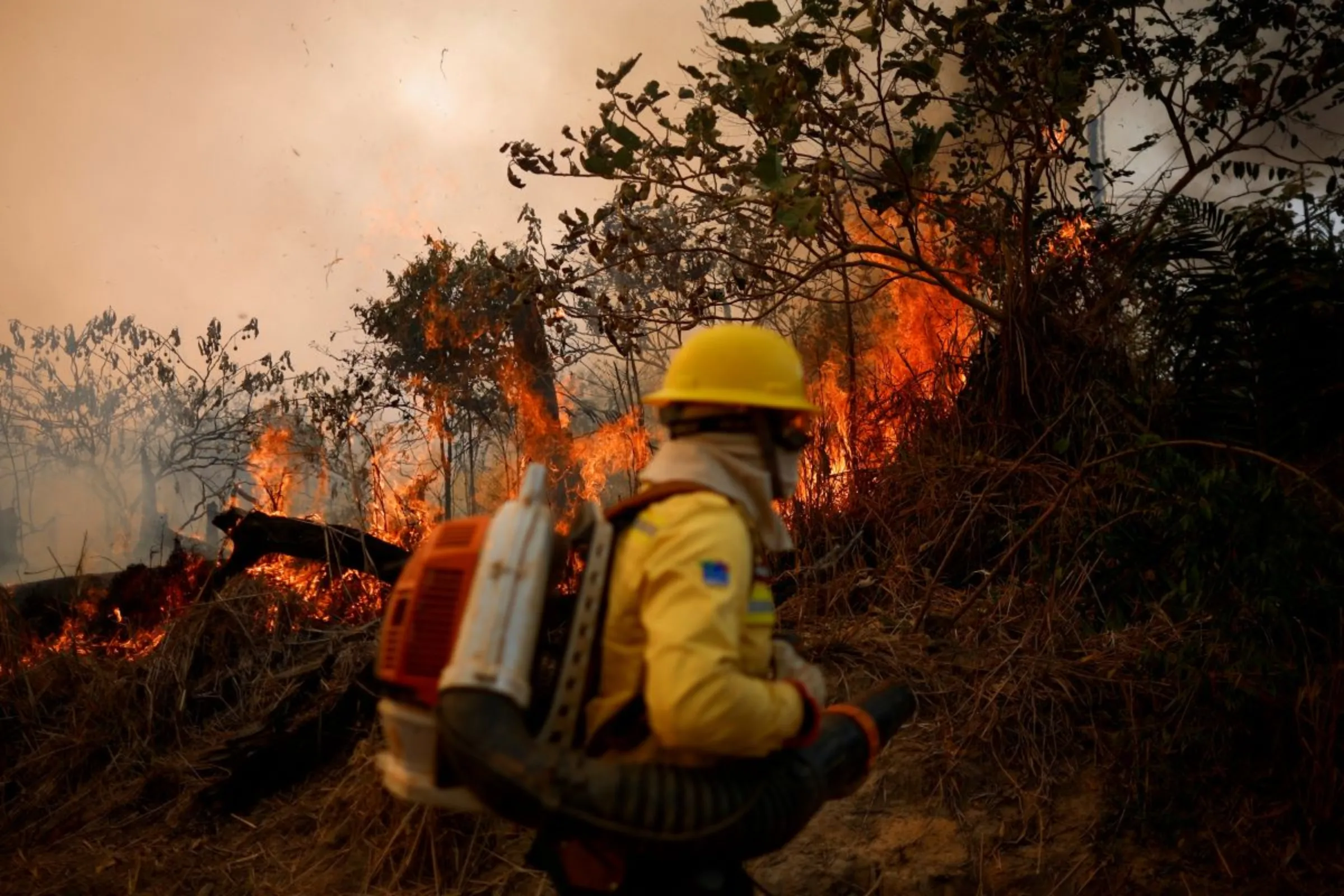The Amazon rainforest’s fire season is now a year-round threat

A member of Brazilian Institute for the Environment and Renewable Natural Resources (IBAMA) fire brigade works to extinguish a fire rising in Amazon rainforest in Apui, Amazonas state, Brazil, August 8, 2024. REUTERS/Adriano Machado
Forest fires are not a natural phenomenon. They are a man-made disaster
Ivan Palmegiani is a biodiversity and land use consultant at Climate Focus. Ekena Rangel Pinage is an ecological integrity research specialist at the Wildlife Conservation Society.
In the Amazon, the world’s largest tropical rainforest, the current fire season is breaking records.
September is typically the worst month. Yet burning in the Brazilian Amazon during the first half of 2024 was the worst in 20 years and 61% worse than the first half of 2023. Peru and Bolivia have declared national emergencies.
Unprecedented droughts created the conditions for fires to spread but humans usually provide the ignition — almost all fires in tropical rainforests are related to human activities.
The so-called “Day of Fire” provides a particularly striking example. In 2019, in the Brazilian state of Pará, a coordinated action by growers and ranchers resulted in 124 arsons ignited in a single day. On the same day in 2018, only six fires were detected by the region’s authorities.
Tropical rainforests are expected to be humid yearlong, not prone to fires. They lack resilience to fires, which means the recovery of these ecosystems could take centuries.
In contrast, some ecosystems, such as Brazil’s Cerrado savannah, have co-evolved with fire and can even benefit from it. Yet even these biomes are threatened. In the first half of 2024, while experiencing the worst drought in recorded history, the Cerrado saw the highest number of fire outbreaks since 1998.
The threat of fires is not limited to the Amazon countries. Studies reveal that the frequency and intensity of extreme wildfires have more than doubled over the past two decades. Data from Global Forest Watch reveals that fires today burn almost twice as much tree cover as they did 20 years ago.
“Megadiverse” countries such as Australia, Indonesia, and Brazil – those with high levels of biodiversity – are at the forefront of the global fire crisis.
Lighting a match
In Australia’s summer of 2019/2020, almost 19 million hectares burned. In Indonesia, the 2023 fire season burned within vast peat deposits in Borneo and Sumatra, releasing enormous volumes of carbon. Fortunately, improvements in fire management measures helped keep those fires to less than half the area burned during the 2015 El Nino weather event.
Many countries remain unprepared. A 2022 U.N. Environment Programme study highlights significant gaps in fire management policies. Funding is often misallocated towards firefighting and emergency response rather than stopping them before they begin, which the study says needs far more resources.
Adaptation strategies are desperately needed as the potential for larger fires has increased, but above all else, human causes of fires must be ended.
“The Amazon may be flammable [due to the droughts], but it will only burn if someone lights a match,” observed Ane Alencar, PhD, a prominent Brazilian researcher.
Brazil has shown leadership by adopting a new National Policy for Integrated Fire Management to address human-ignited fires, while supporting a gradual replacement of the use of fire for agricultural purposes. In the Amazon, setting fires to clear the land after timber operations remove the trees can set off years of unmitigated burning. Burning fields as a method to maintain pastures results in fires spreading into surrounding forests.
In Brazil’s policy, prescribed burns, which remove the accumulation of downed tree limbs and other fire fuel, will be allowed with restrictions.
The policy also acknowledges and respects Indigenous knowledge and practices while creating an entity responsible for developing and harmonising national fire management policies and a national database on fires.
The fire season has grown to encompass the entire calendar year. Megadiverse countries facing escalating fire risks should heed Brazil’s example and implement comprehensive fire management strategies tailored to their own contexts. Research addressing how current burning trends have been altered by climate change is also critical.
We cannot meet global forest goals, as well as global commitments on climate change and biodiversity, without focusing on this escalating threat. We must see it for what it is: a man-made ecological disaster, not a natural phenomenon.
Any views expressed in this opinion piece are those of the author and not of Context or the Thomson Reuters Foundation.
Tags
- Extreme weather
- Climate policy
- Climate and health
- Forests
Go Deeper
Related
Latest on Context
- 1
- 2
- 3
- 4
- 5
- 6
Most Read
- 1
- 2
- 3
- 4
- 5


















